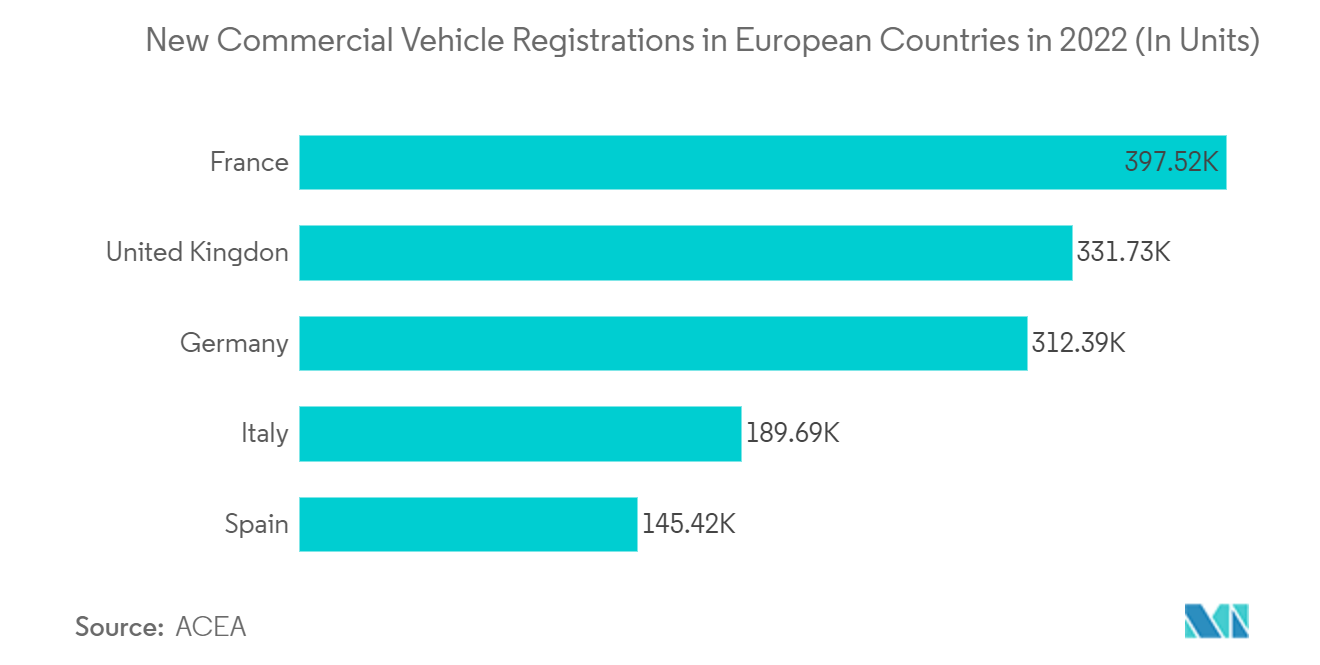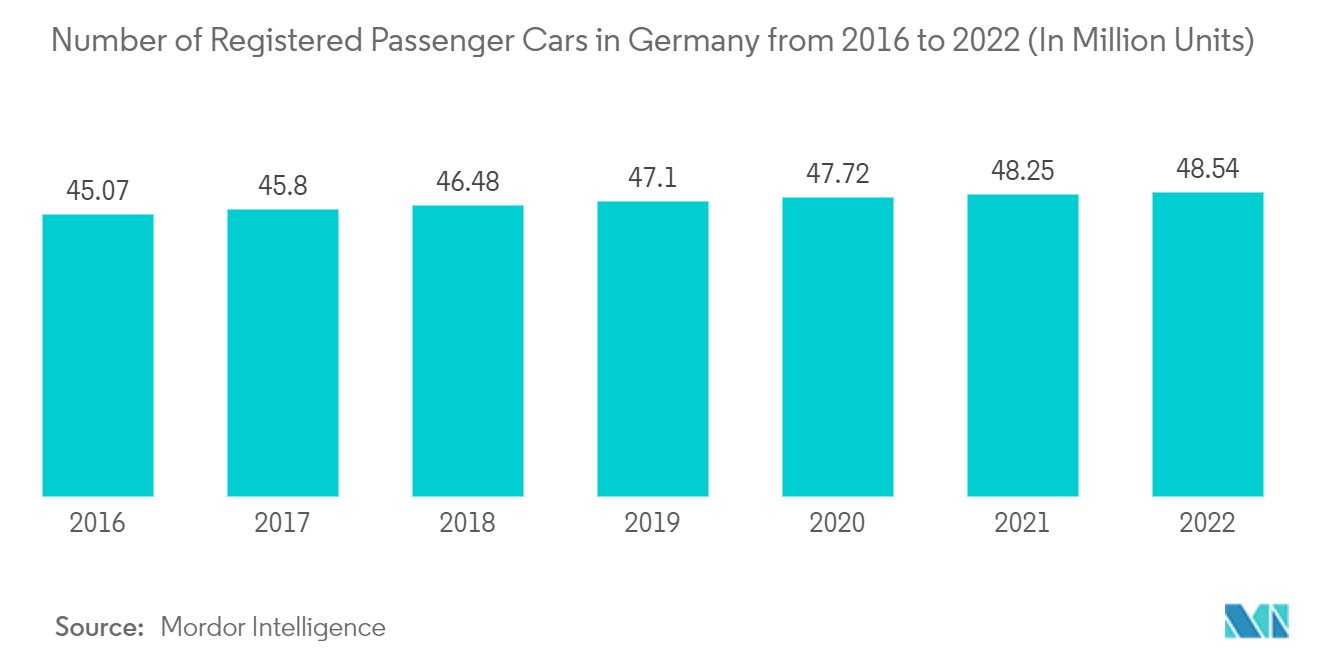Market Trends of Europe Automotive Parts Die Casting Industry
Increasing Demand from the Commercial Vehicle Segment
- The underlying factor driving the growth of the light commercial vehicle market in Europe is the increased preference for pickup trucks and small vans over heavy-duty trucks and railways for logistics. The demand for lightweight vehicle components to integrate into light commercial vehicles is expected to increase significantly during the forecast period.
- The market is recovering from its period of slump during the economic recession of 2010 and is expected to improve further over the forecast period because of the cost-effective benefits associated with using light commercial vehicles (LCVs) over other modes of transport, especially in countries like Italy. In Italy, most of the farms are organic and family-owned. These family-owned businesses lease commercial vehicles to transport their produce to nearby retail outlets, thus, driving the market.
- Also, with new regulations mandating that LCVs stay within the stipulated weight limit, it has become critical for original equipment manufacturers (OEMs) to focus on making LCVs with lighter materials. The fast-growing e-commerce market in the region is also creating a huge demand for commercial vehicles to transport goods to different nations.
- Therefore, due to the aforementioned factors, commercial vehicles are expected to drive the growth of the market.

Germany, Italy, and Russia Expected to be the Three Largest Markets in Europe
- The European automotive industry is known to be the most technically advanced and innovative industry in the world. Due to economic crises and political pressures, the reduction of fuel consumption and CO2 emission has become a major agenda for automobile manufacturers, and reducing the weight of the automobile through better design and construction, seemed to be the most favorable solution. Solutions based on the intensive use of non-ferrous metals as modified or new alloys are being developed specifically for the automotive industry's needs.
- Country-wise, Germany and the United Kingdom are expected to occupy the top spots, accounting for nearly 60% of the total market. Although France is the second-largest ferrous casting country within the European region, when it comes to non-ferrous castings and die casting in particular, the country lags behind Germany and Italy. The Czech Republic and Poland are the other important markets in the European region.
- Owing to the high demand for vehicles in the country, Germany is one of the largest markets for automobiles in the world. The presence of leading automobile manufacturers, as well as component manufacturers, is driving growth in the region.
- Even though the coronavirus pandemic is widely acknowledged to be the primary cause of the decline between 2019 and 2020, buying a new car has always been more expensive. However, it is expected that in 2023, there will be around 48.76 million registered cars in Germany itself.
- Germany is one of the world's leading car producers and is well-known for its excellence in the automotive industry. Today, Germany's automotive industry is one of the most innovative and competitive industries, having the third-highest car production in the world and fourth-highest vehicle production. Germany ranks 1st in car production in Europe, with a 52% market share among the Western European countries and 31% in the European Union.
- Germany invests in R&D growth in the automotive sector. Over the last few years, the country accounted for 60% of the R&D growth in Europe. Germany invested over EUR 20 billion (USD 23.6 billion) in R&D in the automotive industry, which is the highest among other sectors. There are several premium car manufacturers, like Mercedes, Audi, BMW, etc., in the country, which are spending heavily on enhancing their product line.
- Hence, many die-casting companies are investing in expanding their production capabilities in the country. For instance, in September 2022, DGS Druckguss Systeme s.r.o. announced that it had begun operations at the Frdlant plant and produces die castings made of aluminum and magnesium alloy for the automotive industry.
- Owing to the above factors, the market is expected to grow in the coming years.

